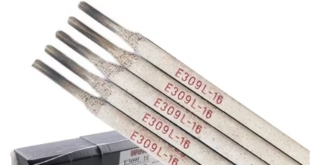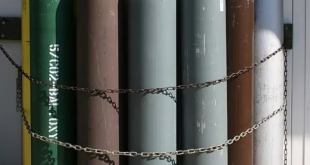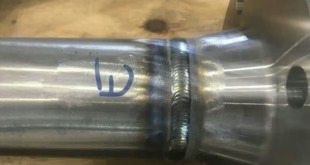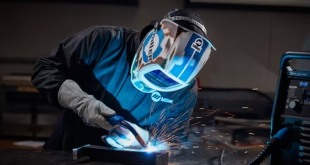AC vs DC Arc Welding
Introduction to AC vs DC Arc Welding
Arc welding is a fundamental process in the world of metal fabrication, essential in construction, automotive industries, shipbuilding, and more. When it comes to arc welding, the two primary types of current used are AC (Alternating Current) and DC (Direct Current). These two forms of electrical current behave differently, and the choice between them significantly impacts the weld quality, weld penetration, and overall efficiency of the process.
AC welding involves a current that reverses its direction multiple times per second, while DC welding delivers a constant, unidirectional flow of electricity. Depending on the materials, the type of project, and the specific welding technique, choosing between AC and DC can make or break the job’s success. This introduction sets the stage for understanding how each type of welding works and when one might be better than the other.

How Arc Welding Works
The Fundamentals of the Arc Welding Process
Arc welding creates heat through an electric arc formed between an electrode and the workpiece. This heat melts the metal at the point of contact, allowing the two materials to fuse together. The electrode can be consumable (meaning it melts into the weld) or non-consumable, depending on the welding technique used (such as Stick, TIG, or MIG welding).
The most critical aspect of arc welding is the control of the electrical current, which can be either AC or DC. This current generates the heat required for melting metals, with each type of current offering different behaviors that affect the welding process.
Components Used in Arc Welding
Arc welding requires several key components:
- Power Supply: The source of electrical current (AC or DC).
- Electrode: Carries the electrical current to the weld pool; it may also melt to form part of the weld joint.
- Workpiece: The metal pieces being joined together.
- Shielding Gas (optional): Protects the molten metal from atmospheric contamination (used in some types of welding, like MIG or TIG).
These components work together to form a molten pool of metal at the point of the arc, which cools and solidifies into a welded joint. The choice between AC and DC power determines how the electrical current interacts with these components.
Different Types of Power Supplies in Arc Welding
In welding, the power supply can deliver either AC or DC current. AC current alternates between positive and negative, while DC current flows in a single direction, either forward (DC+) or reverse (DC-). The differences in how these currents behave will influence weld penetration, arc stability, and electrode performance. The power source is critical in determining the final result of the weld.
What is AC Welding?
AC welding uses an Alternating Current that changes direction periodically, typically at a frequency of 60 hertz in North America (which means it switches direction 60 times per second). In AC welding, the current alternates between positive and negative, which causes the electric arc to extinguish and re-ignite repeatedly. While this might seem like a disadvantage, it has unique benefits for certain materials and applications.
How AC Welding Works
In AC welding, the electrical current cycles between positive and negative, which leads to the arc being less stable than in DC welding. However, this constant switching of the current creates a cleaning effect on the workpiece, especially important for materials that develop oxide layers, such as aluminum.
When welding aluminum, the positive half of the AC cycle breaks up and removes surface oxides, while the negative half of the cycle penetrates the metal. This makes AC welding ideal for aluminum, where the oxide layer needs to be broken down for a clean, effective weld.
Benefits of AC Welding
The key benefits of AC welding include:
- Cleaning Action: The alternating current helps remove oxides from the surface of metals like aluminum, resulting in a cleaner weld.
- Balanced Heat Distribution: The constant switching of the current helps to spread heat more evenly across the workpiece, which can be useful when welding thinner metals.
Ideal Applications of AC Welding
AC welding is best suited for:
- Aluminum welding, especially when dealing with materials that have oxidation or contamination on the surface.
- Overhead or vertical positions, because the alternating current creates less heat, reducing the risk of molten metal dripping or sagging.
- Applications where you require a cheaper welding setup, as AC welders are generally more affordable than DC welders.
What is DC Welding?
DC welding uses Direct Current, where the flow of electricity is constant and flows in one direction. This type of welding offers more arc stability, making it easier to control. In DC welding, the welder can choose between two types of polarity: DC Electrode Negative (DCEN) and DC Electrode Positive (DCEP).
How DC Welding Works
In DC welding, the current flows steadily in one direction. This provides a stable arc, which results in smoother welds with less spatter and better control. DC welding offers two polarity options:
- DCEN (Straight Polarity): The electrode is negative, and the current flows from the electrode to the workpiece. This creates deeper penetration and is typically used for thicker materials.
- DCEP (Reverse Polarity): The electrode is positive, and the current flows from the workpiece to the electrode. This is often used for welding thinner materials as it produces a wider, shallower weld pool.
Benefits of DC Welding
- Stable Arc: The steady current flow results in a more consistent and stable arc, which is easier to control for precise welding.
- Deeper Penetration: DC welding is known for providing better penetration into the material, especially when using DCEN polarity.
- Less Spatter: DC welding produces fewer sparks and splatter, leading to cleaner welds that require less post-weld cleanup.
Ideal Applications of DC Welding
DC welding is particularly useful for:
- Welding thick materials, such as steel and iron, due to the deeper penetration of the weld.
- Precise welding projects where control is essential, such as in automotive work and pipe welding.
- Beginners, as the stable arc is easier to handle compared to the fluctuating arc of AC welding.
Differences Between AC and DC
When comparing AC vs DC arc welding, several important differences become clear:
- Power Source: AC welding uses an alternating current, while DC welding uses a direct current. This is the fundamental difference, leading to various changes in how the welding process behaves.
- Arc Stability: DC welding is known for producing a more stable arc, which is easier to control. AC welding, on the other hand, creates a fluctuating arc because the current changes direction regularly.
- Penetration: DC welding generally offers deeper penetration, making it better suited for thick materials. AC welding distributes heat more evenly, which is ideal for thinner or more delicate materials.
- Applications: AC welding is better for overhead and vertical welding or when working with aluminum. DC welding is better suited for precise work and thicker metals.
Advantages and Disadvantages of AC Arc Welding
Advantages of AC Arc Welding
- Better for Oxidized Metals: AC welding is ideal for aluminum and other metals with oxide layers due to its cleaning action.
- Balanced Heat: The constant switching of current makes it less likely to overheat thinner materials.
- Affordable Equipment: AC welders are generally more affordable than DC welders, making them a good choice for budget-conscious welders or beginners.
Disadvantages of AC Arc Welding
- Less Stable Arc: The alternating current can make the arc less stable, making it harder to control.
- More Spatter: AC welding tends to produce more spatter, which means more time spent on cleanup after welding.
- Limited Penetration: AC welding doesn’t penetrate thick materials as well as DC welding, making it less suitable for heavy-duty applications.
Advantages and Disadvantages of DC Arc Welding
Advantages of DC Arc Welding
- Stable Arc: The steady current of DC welding creates a stable arc, leading to easier control and more precise welds.
- Deeper Penetration: Especially with DCEN polarity, DC welding offers deeper penetration into the workpiece, making it ideal for thicker materials.
- Less Spatter: DC welding produces less spatter compared to AC welding, leading to cleaner welds and less post-weld cleanup.
Disadvantages of DC Arc Welding
- More Expensive Equipment: DC welders are generally more expensive than AC welders, which can be a drawback for beginners or those on a tight budget.
- Not Ideal for Aluminum: DC welding doesn’t offer the same cleaning action as AC welding, making it less effective for aluminum and other oxidized materials.
Which One Should You Choose?
The choice between AC vs DC welding depends on several factors:
Material Thickness and Type
If you are working with thicker materials, DC welding will provide the necessary penetration. On the other hand, if you’re welding thinner metals or aluminum, AC welding is often the better choice.
Welding Position
For overhead or vertical positions, AC welding is often preferred due to its balanced heat distribution, which reduces the chances of sagging or dripping.
Type of Electrode Used
The type of electrode you use can also affect your choice of current. Some electrodes are designed for AC welding, while others perform better with DC. Be sure to check the electrode specifications before starting your weld.
Safety Tips for Arc Welding
Arc welding, whether AC or DC, comes with certain risks, and safety should always be a priority. Here are some tips:
- Protective Gear: Always wear a welding helmet, gloves, and flame-resistant clothing to protect yourself from sparks and UV radiation.
- Ventilation: Ensure you work in a well-ventilated area to avoid inhaling harmful fumes.
- Electrical Safety: Be cautious of electrical hazards, especially with AC welding, as alternating current can cause more severe electric shocks than DC.
- Workspace Cleanliness: Keep your work area clear of flammable materials and always be aware of fire risks when welding.
FAQs
Which welding is stronger, AC or DC?
DC welding is generally stronger due to its deeper penetration, especially when working with thicker materials like steel or iron. The stable arc and consistent heat flow also contribute to better overall weld strength.
Can I use the same electrodes for both AC and DC welding?
Some electrodes are designed for both AC and DC welding, but many are specific to one type of current. Always check the electrode packaging or manufacturer guidelines to ensure you’re using the appropriate type for your current.
Is AC welding cheaper than DC welding?
Yes, AC welding is often cheaper because AC welders are less expensive and more readily available. AC welding setups tend to be simpler, making them a cost-effective option, especially for beginners.
What are the typical applications of AC vs DC welding?
AC welding is commonly used for aluminum and in overhead welding due to its self-cleaning and balanced heat properties. DC welding is used for steel, iron, and other thick materials that require deeper penetration and precision.
Is one type safer than the other?
Both AC and DC welding are safe when proper precautions are followed. However, AC welding carries a higher risk of electric shock due to the alternating nature of the current, making it slightly riskier in terms of electrical safety.
Conclusion
Choosing between AC vs DC arc welding depends on the specific needs of your project. AC welding is ideal for materials that need self-cleaning, like aluminum, and is a good choice for overhead work and cost-effective setups. DC welding, on the other hand, offers more stability, deeper penetration, and is better for thick materials and precision work. Understanding these differences allows welders to choose the right method for each job, ensuring both efficiency and quality.
 Welding of Welders All about Welding and Welders
Welding of Welders All about Welding and Welders



